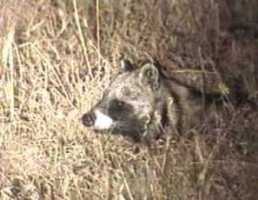 |
 |
|
Scientific Name: Civetticus civetta
Common Name: African Civet, Zibetkatze, La Civette
Distribution: inhabits the savannahs and the
forests of southern and central Africa. The African civet is rarely found in
arid regions; however, it can be found along river systems that project into the
arid areas of Niger, Mali, and Chad
Description: A grey coat, marked with black spots and
bars. It has a grey forehead and a conspicuous broad black band across the face
and around the eyes. The throat, chest and lower limbs are black
Difference in Sex:
Average Weight of Adult:
11 to 15 kg
Habitat: They are found throughout the African tropics
except the desert areas and usually close to watercourses and in woodland areas.
Habits: Generally on their own, and meet for mating.
Main feeding time: night
Size: Shoulder height 40 cm
Gestation: 2 months
Number of young at birth: 2 to 4 young
Communication:
Age:
Diet: Omnivorous, they feed on snakes, birds, eggs,
hares, spiders, millipedes, fruit, snails and fish.
Enemies: lion, hyena and leopard
Interesting facts: They are territorial, marking their
territory using dung and anal secretions.
They can give off foul smelling secretion from their anal
gland, which may deter predators.
Credits: TGF |